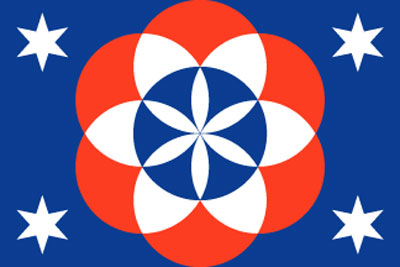The Space Flagby Michael Huang
|
| Humans versus robots is really a disguised form of “Should human spaceflight continue?” |
The main problem with space colonization is that the everyday person, the “man on the street”, has never heard about it. When human spaceflight gets the headlines, its chief goal—its raison d’etre—is never mentioned. This failure of communication is dangerous. If pro-human-spaceflight advocates don’t define what human spaceflight stands for, anti-human-spaceflight advocates will do it instead. Politicians face a similar problem. In an election campaign, they must define themselves and their policies in the public mind (through advertisements, public appearances, etc.) before their opponents do it for them.
Colonization needs publicity. One of the great challenges for space enthusiasts in these times is to bring colonization into the public conversation. Unfortunately, the most effective ways of reaching a mass audience, e.g. television, are priced for big marketing campaigns, not space enthusiasts or non-profit organizations. However, there is an opportunity in one of the oldest forms of communication.
Flags have been used throughout human history, usually to represent peoples and nations, but also to represent ideas and movements. The Space Flag represents life and humans living on Earth, and growing towards living beyond Earth. Its main symbol, made up of seven overlapping circles, is the aptly named “Seed of Life”. The Seed of Life resembles a flower, a symbol of life and growth. The central blue circle represents the Earth, and the other six circles represent colonies. The stars—ad astra—represent the ultimate destination for life.
The Space Flag has a web site with more detailed information. Computer files of the flag are free to download. However, a real cloth flag will require a custom flag maker. Flag manufacturers can be found in the Yellow Pages or on the Internet.
Life and humankind’s journey to space will be long and difficult. Similar journeys, though, have been completed before: life’s journey out of water and on to land as well as humankind’s journey out of Africa and on to the rest of the Earth. The Space Flag will be a constant reminder of where we’ve been and where we’re going.
